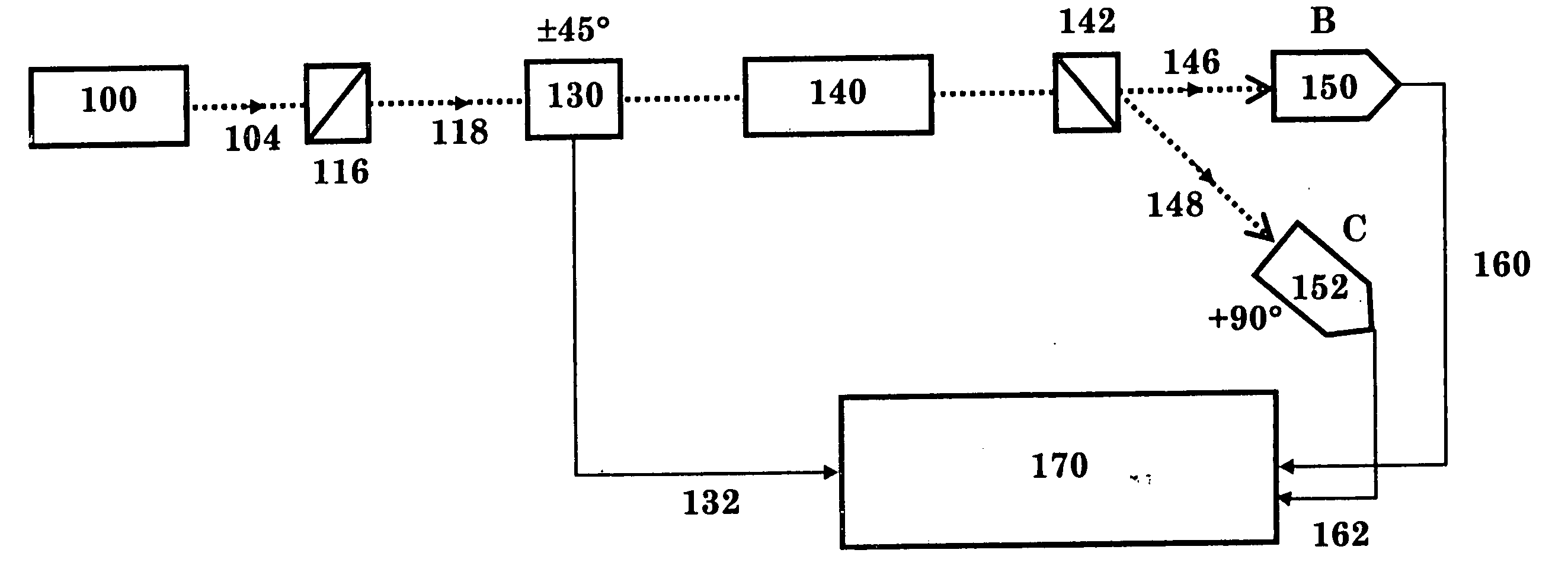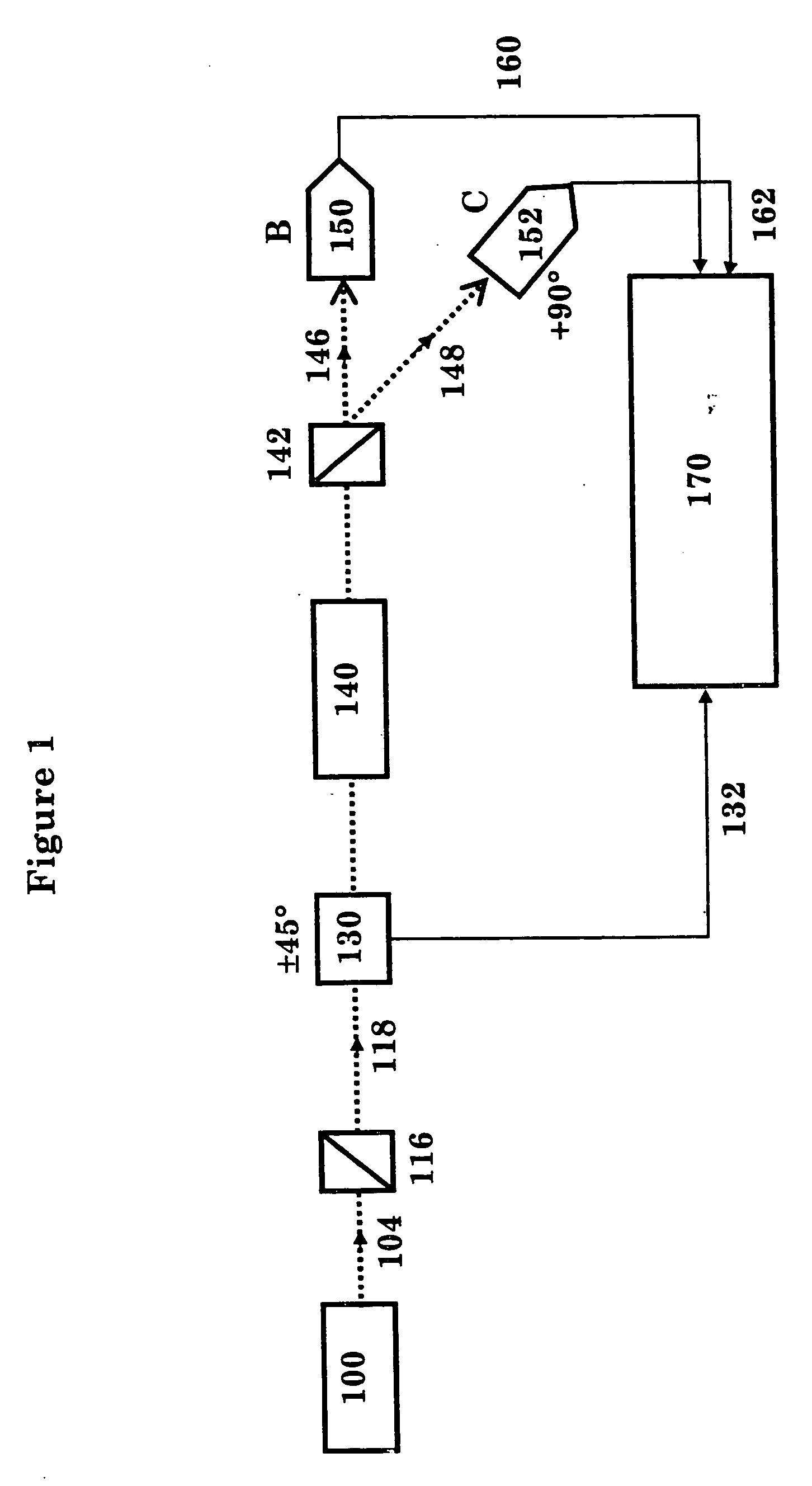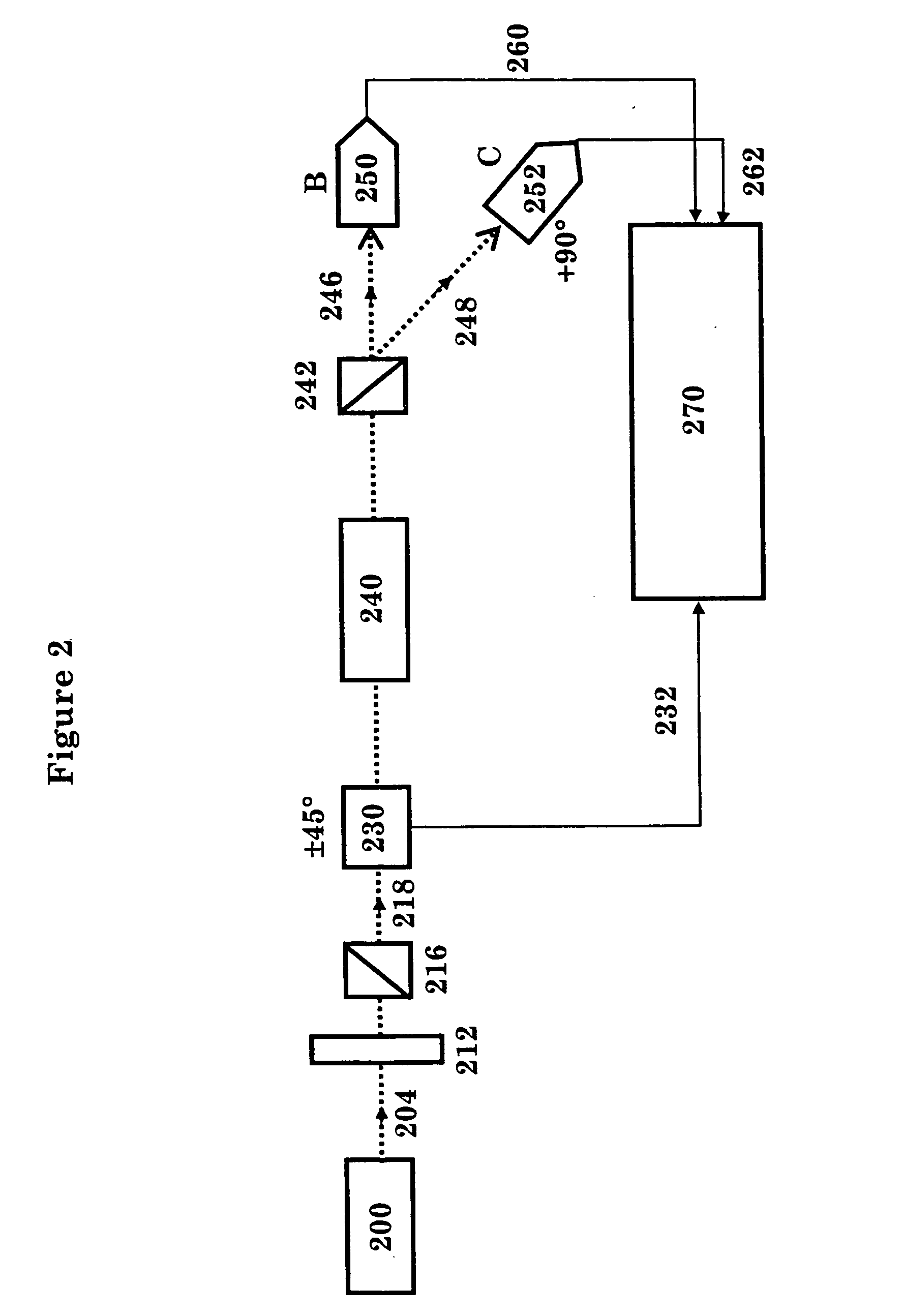Differential optical technique for chiral analysis
a chiral analysis and optical technique technology, applied in the field of chiral detectors, can solve the problems of affecting the polarisation of the detector, and the researcher cannot generally apply a high-throughput enantiomeric purity screening method, so as to improve the sensitivity, reduce noise, and improve the effect of optical rotation
- Summary
- Abstract
- Description
- Claims
- Application Information
AI Technical Summary
Benefits of technology
Problems solved by technology
Method used
Image
Examples
Embodiment Construction
[0030] A block diagram of an embodiment of a basic differential optical rotary dispersion (DORD) apparatus in accordance with principles of the present invention is shown in FIG. 1. The basic apparatus includes light source 100, polarizer 116, signal modulator 130, sample cell 140, analyzer 142, a balanced photoreceiver (detectors B 150 and C152) and a lock in detector 170. The light source 100 can consist of a monochromatic source such as a laser, but a wider range of wavelengths provides more useful information. In a preferred embodiment, stabilized UV and tungsten lamps may be utilized to provide a bright broad wavelength source covering the approximate range 200 to 1100 nm when implementing the light source 100 with a Hamamatsu Model L7893 series lamp. A pulsed light source may be used to avoid ambiguities associated with intermediate polarizer positions. However, in practice a continuous light source can be used and the switching time of the signal modulator may be fast enough ...
PUM
| Property | Measurement | Unit |
|---|---|---|
| wavelength range | aaaaa | aaaaa |
| wavelength | aaaaa | aaaaa |
| wavelength range | aaaaa | aaaaa |
Abstract
Description
Claims
Application Information
 Login to View More
Login to View More - R&D
- Intellectual Property
- Life Sciences
- Materials
- Tech Scout
- Unparalleled Data Quality
- Higher Quality Content
- 60% Fewer Hallucinations
Browse by: Latest US Patents, China's latest patents, Technical Efficacy Thesaurus, Application Domain, Technology Topic, Popular Technical Reports.
© 2025 PatSnap. All rights reserved.Legal|Privacy policy|Modern Slavery Act Transparency Statement|Sitemap|About US| Contact US: help@patsnap.com



